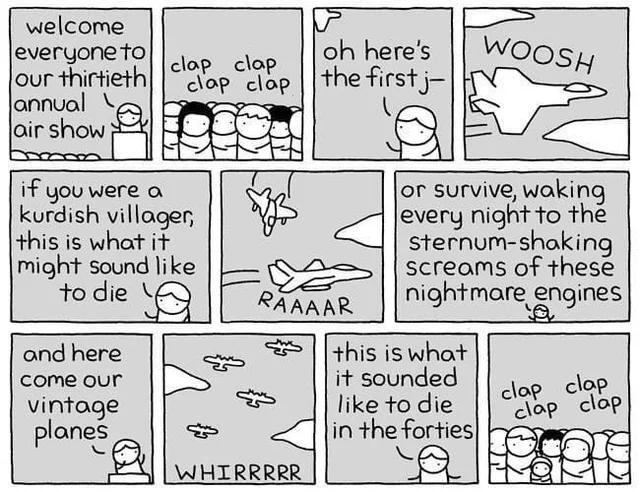this post was submitted on 11 Oct 2024
974 points (96.0% liked)
Comic Strips
13040 readers
2746 users here now
Comic Strips is a community for those who love comic stories.
The rules are simple:
- The post can be a single image, an image gallery, or a link to a specific comic hosted on another site (the author's website, for instance).
- The comic must be a complete story.
- If it is an external link, it must be to a specific story, not to the root of the site.
- You may post comics from others or your own.
- If you are posting a comic of your own, a maximum of one per week is allowed (I know, your comics are great, but this rule helps avoid spam).
- The comic can be in any language, but if it's not in English, OP must include an English translation in the post's 'body' field (note: you don't need to select a specific language when posting a comic).
- Politeness.
- Adult content is not allowed. This community aims to be fun for people of all ages.
Web of links
- [email protected]: "I use Arch btw"
- [email protected]: memes (you don't say!)
founded 2 years ago
MODERATORS
you are viewing a single comment's thread
view the rest of the comments
view the rest of the comments

It is a negotiated treaty from the 1800s, though it took until the 1970s to get clarity on a big part of their rights. But they're still on reservations and their ancestral lands are partitioned up. They've acquired some of those lands back through various ways: legal battles and just plain buying it back.
Though mind you I'm relating something I remember as a teenager, from teenagers with politically active parents.
But more importantly my point was to highlight a lens into a different perspective. They knew they would have been just like the Kurdish villager in the comic had those planes been invented back then. I had never considered that viewpoint at the time.
yeah, which i why i consider the use of pseudo occupation, as opposed to like, settlement or something. There aspects of occupation, but up to the current modern day, there are natives in positions of power within the US government, and those with sovereign control over their own land as well.
Although to be fair, most people didn't have very many rights until the 1970s lmao.
I think those 'aspects of occupation' are quite relevant. The treaties weren't respected and Americans would just remove the people, bury tribal lands in fill material and build on top.
For example, emphasis mine: https://en.m.wikipedia.org/wiki/Tse-whit-zen
Notice that timeline: 'occupied until 1930s' and 'Early 20th century.' The people were removed and they buried everything until 2004 when they started excavating skeletons. This isn't all ancient history and it hasn't really been... amicable.